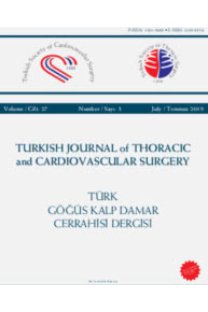Ozaki Procedure
Ozaki Procedure
___
- 1. Mack MJ, Leon MB, Thourani VH, Makkar R, Kodali SK, Russo M, et al. Transcatheter aortic-valve replacement with a balloon-expandable valve in low-risk patients. N Engl J Med 2019;380:1695-705.
- 2. Popma JJ, Deeb GM, Yakubov SJ, Mumtaz M, Gada H, O’Hair D, et al. Transcatheter aortic-valve replacement with a self-expanding valve in low-risk patients. N Engl J Med 2019;380:1706-15.
- 3. Chakos A, Wilson-Smith A, Arora S, Nguyen TC, Dhoble A, Tarantini G, et al. Long term outcomes of transcatheter aortic valve implantation (TAVI): a systematic review of 5-year survival and beyond. Ann Cardiothorac Surg 2017;6:432-43.
- 4. Ueshima D, Fovino LN, D’Amico G, Brener SJ, Esposito G, Tarantini G. Transcatheter versus surgical aortic valve replacement in low- and intermediate-risk patients: an updated systematic review and meta-analysis. Cardiovasc Interv Ther 2019;34:216-225
- 5. Ozaki S, Kawase I, Yamashita H, Uchida S, Takatoh M, Kiyohara N. Midterm outcomes after aortic valve neocuspidization with glutaraldehyde-treated autologous pericardium. J Thorac Cardiovasc Surg 2018;155:2379-87.
- ISSN: 1301-5680
- Yayın Aralığı: Yılda 4 Sayı
- Başlangıç: 1991
- Yayıncı: Bayçınar Tıbbi Yayıncılık
Arteriyovenöz fistül oluşturmak için ön kol bazilik ven transpozisyonu: Orta dönem sonuçlarımız
Ömer Faruk ÇİÇEK, Hacı Alper UZUN, Mustafa SEREN
Resect or respect, but please repair
Supravalvüler aort darlığında tekrarlayan cerrahi yaklaşım gereksinimi
Çağatay BİLEN, Gökmen AKKAYA, Osman Nuri TUNCER, Yüksel ATAY
Alveolar ekinokokta laparotomi ile pulmoner metastazektomi
Atila EROĞLU, Ali Bilal Ulaş, Gürkan Öztürk, Ömer Topdağı, Yener AYDIN, Ebru Şener
Minimally invasive total arterial off-pump coronary revascularization: A reproducible technique
Ahmet Barış DURUKAN, Ertuğrul ERCAN, Hakan GÖÇER, Muhammed ABUSHAREKH
Ozaki Procedure: 1,100 patients with up to 12 years of follow-up
Minimal invaziv akciğer kanserinde eski bir kontrendikasyon: Bronşiyal staplere yer yok
Kemal AYALP, Tuğba COŞGUN, Erkan KABA, Alper TOKER
Endovasküler anevrizma tamiri sonrası uzun dönemde akut aort trombozu: Olgu sunumu
